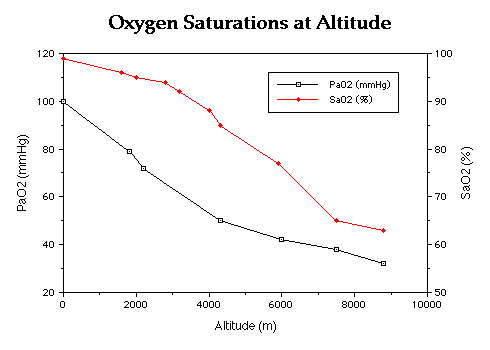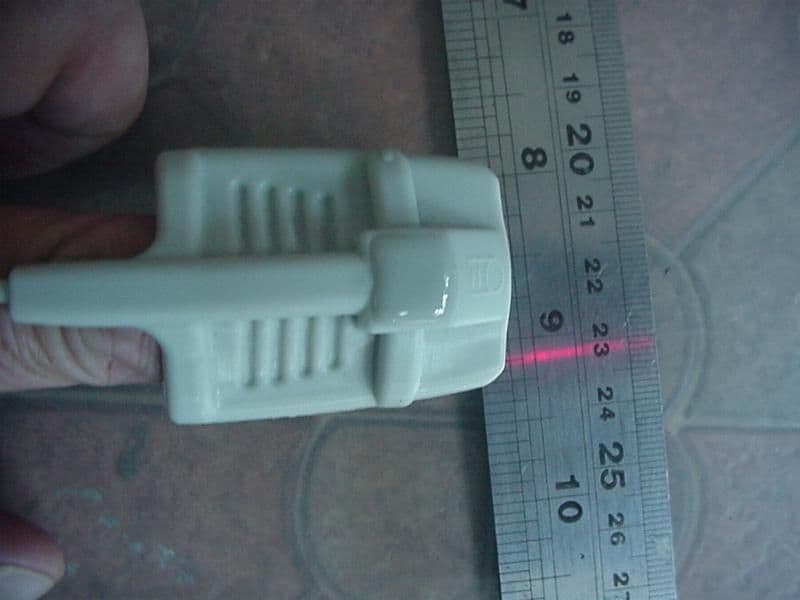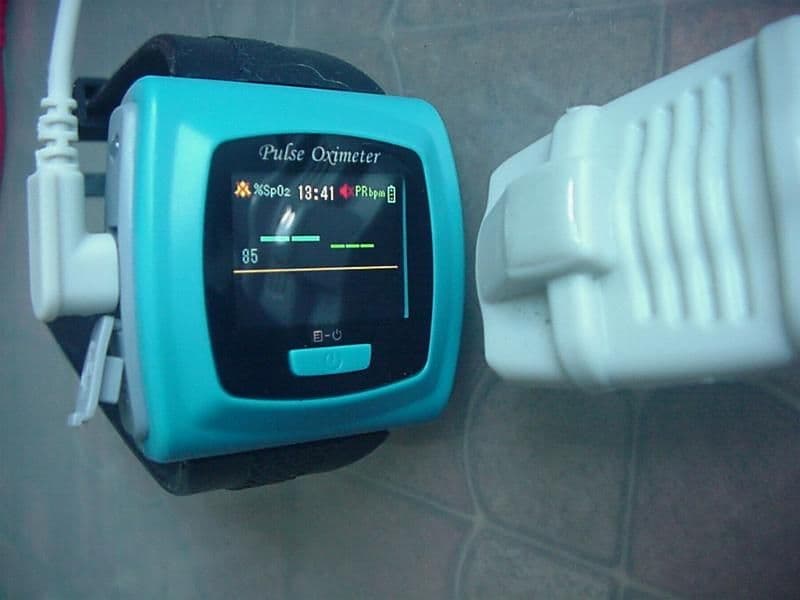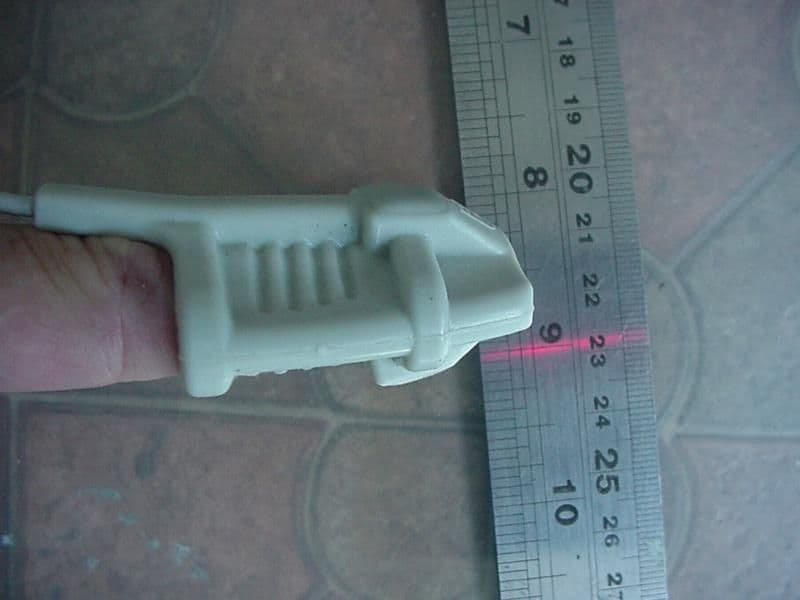Pulse oximeters
Pulse oximeters
Are pulse oximeters commonly used above 10,000' as a means of keeping a watch for potential hypoxia ? There are many available on Amazon, and it seems like a simple and inexpensive solution, wondering how useful/practical they are in practice ?
Some are difficult to read in sunlight. Was using one once when on O2 above FL150 when I noted saturation down well below 80% and wondered why I was able to note that fact. Turned out I was reading my pulse rate not O2 saturation!
If you know how to read it and the display is readable in your cockpit's ambient light then yes they are very good.
If you know how to read it and the display is readable in your cockpit's ambient light then yes they are very good.
Thanks both, I will try one. Virtually all of my flying is above 6,500' frequently above 9,000. But I start off at 5,500'! Perhaps that means I am well acclimatized, but it will be interesting to see.
Good point about visibility in bright sunlight.
Good point about visibility in bright sunlight.
Moderator
I have one. I don't fly high much any more, but they certainly work. During my experimentation as a observer following some higher altitude flight testing, I was able to purposefully get my O2 down to 88%, and felt miserable.
Join Date: Jan 2004
Location: Cambridge
Posts: 12
Likes: 0
Received 0 Likes
on
0 Posts

flying unpressurised above 10,000' you will be hypoxic so you need to know how much hypoxia is normal - the red line on the graph shows the rough relationship between oxygen saturation level and increasing altitude (5000m in Denver they run around or below 90%) above 6,500m sats bottom out at around 60-65% (compensatory hyperventilation) So you will need to figure what is normal for you at height so you can then spot a sudden significant difference (if you're still conscious !)
Last year, I ferried a Scout glider-towplane 250 nm over the Canadian Rockies. Two hours at 8,000-10,000’ and one hour at up to 11,000’. After I had landed, it was obvious to me and others that I was mildly hypoxic.
I’m definitely going to buy a pulse oximeter before flying high again. I’m also planning to use oxygen with a nasal cannula. A friend of mine, who is of a similar advanced age, routinely uses oxygen on glider flights above 6,000’ or so. He says it definitely improves his performance and airmanship during the flight, and he feels less tired after the flight.
As others have pointed out, readability is quite variable in pulse oximeters. I would not buy one, without having viewed the display in various lighting situations.
cats_five,
Almost all of the pilots in my club use pulse oximeters when wave flying.
I’m definitely going to buy a pulse oximeter before flying high again. I’m also planning to use oxygen with a nasal cannula. A friend of mine, who is of a similar advanced age, routinely uses oxygen on glider flights above 6,000’ or so. He says it definitely improves his performance and airmanship during the flight, and he feels less tired after the flight.
As others have pointed out, readability is quite variable in pulse oximeters. I would not buy one, without having viewed the display in various lighting situations.
cats_five,
Almost all of the pilots in my club use pulse oximeters when wave flying.
When I fly with an oxygen installation (Mountain High EDS is very popular in gliders) I have it active from 5,000íPA. Some of the airfields I fly from are near/above that and you want all your wits about you when you are close to the ground. Iíve done flights with a pulse oximeter and itís amazing what a difference just a little bit of supplemental oxygen has, if the delivery system is any good.
Close to the rock in the mountains and in extreme conditions in places like Namibia and South Africa, itís a real safety thing.
Close to the rock in the mountains and in extreme conditions in places like Namibia and South Africa, itís a real safety thing.
Join Date: Jul 2009
Location: Secessionist Republic of Western Australia
Age: 67
Posts: 51
Likes: 0
Received 0 Likes
on
0 Posts
My partner has a congenital heart issue so we have used the small finger type for many years. Recently we thought it would be a good idea to find a data-logging type, and bought a unit online from a Chinese supplier who seem to only supply medical equipment and supplies. It was AU$68 and we are very pleased with it. It resembles a large wrist-watch with silicone finger sensor connected by a short lead. The display brightness can be varied and is much more readable than the small finger end type. Various parameters can be altered, and the supplied graphical software is easy to use and informative as it seems to be designed for professional use. The connection to a PC is USB, no Bluetooth unfortunately. In real-time reading the display stays on, but in logging mode the display turns off after a short period to conserve battery, which claims to run for 20 hours. I was surprised when I put two small oxi units and the new sensor on different fingers simultaneously that the O2 readings were all the same, plus or minus 1%, for a long period. (The same with the heart rate, but that parameter is an 'all or nothing' measure.)
Weeds,
That could be quite useful for wave flying. Is the sensor small enough that you could wear it under a large glove?
That could be quite useful for wave flying. Is the sensor small enough that you could wear it under a large glove?
My partner has a congenital heart issue so we have used the small finger type for many years. Recently we thought it would be a good idea to find a data-logging type, and bought a unit online from a Chinese supplier who seem to only supply medical equipment and supplies. It was AU$68 and we are very pleased with it. It resembles a large wrist-watch with silicone finger sensor connected by a short lead. The display brightness can be varied and is much more readable than the small finger end type. Various parameters can be altered, and the supplied graphical software is easy to use and informative as it seems to be designed for professional use. The connection to a PC is USB, no Bluetooth unfortunately. In real-time reading the display stays on, but in logging mode the display turns off after a short period to conserve battery, which claims to run for 20 hours. I was surprised when I put two small oxi units and the new sensor on different fingers simultaneously that the O2 readings were all the same, plus or minus 1%, for a long period. (The same with the heart rate, but that parameter is an 'all or nothing' measure.)
Join Date: Jul 2012
Location: Nympsfield
Posts: 14
Likes: 0
Received 0 Likes
on
0 Posts
Nonin seems to be a brand name for it. lots of options. Looking on their Products/Sensors page, the 8000J serie might be good in a glider with gloves. No sure about distributors outside of healthcare and price and if there is chinese clones.
Join Date: Jul 2009
Location: Secessionist Republic of Western Australia
Age: 67
Posts: 51
Likes: 0
Received 0 Likes
on
0 Posts
India Four Two:
Sorry for the delay in replying. The finger sensor is quite large to fit in a glove, unless you cut the end off one of the fingers. There was an option for a fabric-type sensor to fit on an infants leg.



Sorry for the delay in replying. The finger sensor is quite large to fit in a glove, unless you cut the end off one of the fingers. There was an option for a fabric-type sensor to fit on an infants leg.



Join Date: Jul 2009
Location: Secessionist Republic of Western Australia
Age: 67
Posts: 51
Likes: 0
Received 0 Likes
on
0 Posts
Double barrel:
I'm not sure if I'm allowed to post a link to eBay, but this should find it:
I'm not sure if I'm allowed to post a link to eBay, but this should find it:




